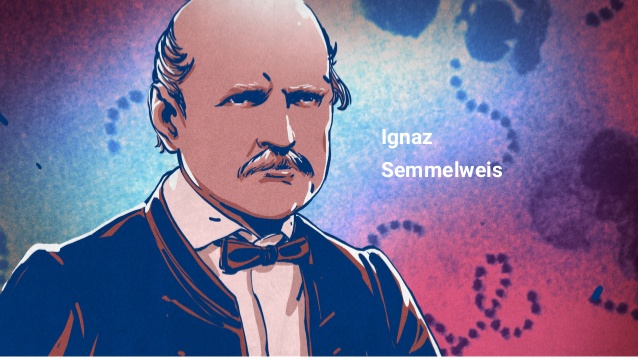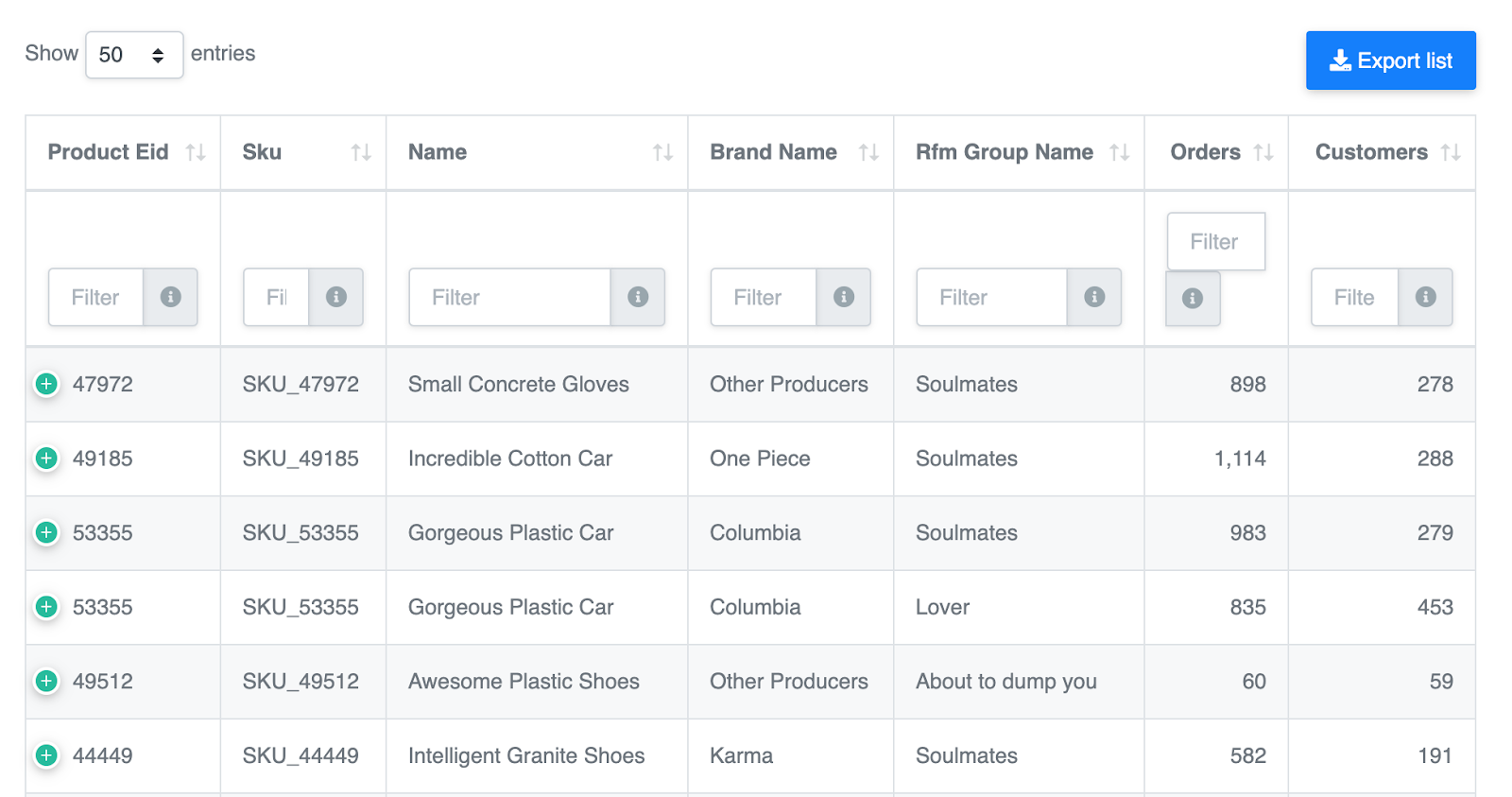Everybody’s talking about Coronavirus and its negative or positive consequences in eCommerce, but nobody’s talking about the real lessons that every business owner or eCommerce manager should learn from this pandemic.
But let’s put the whole situation into perspective and go back in time, more precisely in 1846 when Ignaz Semmelweis began working in the obstetrics division in the Vienna Hospital.
Back then, the leading cause of maternal mortality was the puerperal fever and the Vienna Hospital was not an exception.

Due to the high mortality rate, a policy had been introduced in the hospital and every medical student and obstetrician had to perform autopsies after each death. But something intriguing happened: the mortality rate jumped to 7.5%.
The mortality rate jumped to 7.5%
In the meantime, a second division had been opened where there were only midwives assigned, while the first one was staffed with physicians and medical students. Rather quickly it became obvious that in the first division, the mortality rate was higher. Why that?
Semmelweis discovered that the difference between those 2 was the autopsy – no midwife has ever participated in the autopsy so he concluded that the fever was transmitted to a new mother from the hands of the students and attending physicians who rarely washed their hands.
After this, Semmelweis introduced the hand-washing technique using chloride solution for anyone entering the obstetrics division and he was named the “Father of hand-washing”.
The lesson?
You might expect to hear a philosophical conclusion, but the lesson is that most of the time the problem may lay in us, on how we perceive things.
If you are constantly asking yourself “Why doesn’t my business drive more sales?” or “Why is it not performing better?” and you are pointing at your employees, you are pointing in the wrong direction.
In a pandemic crisis, we can see 2 kinds of online businesses:
- Empathetic, customer-centric, acting proactively, looking for opportunities
- Reactive, product-centric, trying the same strategies in a hectic way
The SARS crisis in 2003 is widely known for kickstarting Alibaba’s and other Chinese companies’ e-commerce successes in Asia. Alibaba launched its online marketplace for consumers during the SARS crisis when many Chinese were at home in quarantine.
In which category do you think they fall? The answer is self-explanatory. They saw the pandemic as an opportunity to penetrate the online market.
How to react in times of crisis
If you ever wonder why something does not work in your business, check in which category from the above you fall in.
Being customer-centric will be a good strategy in any situation. 95% of our purchase decisions are based on emotions so if you take a moment to look at your customers from this perspective, it will be much easier to build your strategy. The pandemic reactions proved that.
95% of our purchase decisions are based on emotions
A good experience with a brand -> drives emotions -> creates a positive impact -> leads to action, high memorability
A bad experience with a brand -> drives no emotion ->creates no action, low memorability

Today, as you can find any product everywhere… Customer Experience matters more. We are living the Experience Economy where every touchpoint with a business weights more than ever.


The standard eCommerce Customer Journey has been so far pretty simple, without too many interactions, but business owners should now adapt to the new Customer Journey which is way more complex.
There are simple questions to ask if you want to always have a customer-centric approach:
Do I communicate with my customers or potential customers in the best possible way?
Do I offer enough information when the customer needs it the most?
Do I measure how customers feel about my brand?
Is there anything I can do to improve the customer journey in each touchpoint?
No matter what, have the customer in mind.
The true purpose of a business, Peter Drucker said, is to create and keep customers.
Peter Drucker
Customer Value Optimization Methodology for better Customer Experience
Customer Value is often defined as the total lifetime value that your customer database brings. Customer Value means to acquire more valuable customers, earn profits from existing ones and retain them longer by improving their experience.
Companies like Amazon, Alibaba, Costco, Airbnb and others are the perfect business examples that focuse on Customer Value rather than short-term profits.
If you want to grow healthy and sustain your business in the future, even in a pandemic, here’s a long-term strategy for Customer Value Optimization:
Step #1 Evaluate your business
Monitor Customer Lifetime Value & the KPIs that are affecting it:
- Cost of Acquisition
- Customer Retention Rate
- Net Promoter Score (NPS)
- Customer Effort Score (CES)
- Average Days Between Transactions (ABDT)
- 2nd Month Cohort Stickiness
Step #2 Conduct RFM segmentation
RFM segmentation is a method that identifies the most important type of customers by grouping them according to scores by recency, frequency & monetary values.
That allows companies to target specific clusters of customers more relevantly for their particular behavior – and thus generating higher rates of response, increased loyalty and better customer lifetime value.

This is an example of groups that you can extract from the RFM segmentation.
Most businesses find out that 20% of their customers bring 80% of their revenue.
Step #3 Discover buying anomalies
Anomalies will yield what makes one RFM group different from others and allow us to discover toxic brands or categories, cities with loyal customers, etc or preferred brands per group/preferred categories.
For example, if you discover that your soulmate customers are buying certain products and they are satisfied with that (they have a high NPS score), you will be able to know what to promote in the future.

Image: Reveal Dashboard
Step #4 Qualitative Research & Ideal Customer Profile
After you group your customers, you want to find out more about each group of customers.
- Who they are (location, gender, age)
- When the buy (buying habits)
- What they buy (product assortment anomalies)
- What keeps them coming back (reasons & barriers)
- What they need further (qualitative research)
After you’ve answered all these questions for each RFM group, you’ll be able to build your Ideal Customer Profile. The ICP will help you define who you want to attract to your shop in the future.

Step #5 Draw the Customer Journey As-Is
Imagine you are watching a movie where the main character is your customer. Put on the table all the touchpoints where your client interacts with your business in any form (website, customer service) and highlight the places where they have “happy moments” or squeaky experiences.

Step #6 Draw the Customer Journey To-be
Make a plan with all the aspects you need to improve or which you need to take advantage of and map them on the customer journey.
Beside this, now that you know (almost) everything about your customer, build a comprehensive retention plan to make people come to your business again:
- Email campaigns
- Upsell campaigns
- Promotional Campaigns
- Customer satisfaction
- Manyyyyyyyy other strategies

Even if this process seems too complicated, we guarantee that you will see the results. Here are some benefits of going for Customer Value Optimization on the long run:
- Drive a smart and profitable acquisition strategy based on your Ideal Customer Profile
- Find out how much money you are losing through low retention rates
- Find out which are your best and worst customers and the ones you are in danger of losing
- Build unique omnichannel experiences for your customers based on their buying behavior
- Refine your assortments based on NPS results
- Understand your best performing cohorts in terms of stickiness, to increase repeat purchases
Conclusion
In the next recession, pandemic or any other challenge that you might have, your business will be better off with a long-term strategy, focused on your customers. You will not have to worry about business stability unless you are not there for your customers.
For more such Updates follow us on Google News Martech News
ABOUT THE AUTHOR


Mara Gavrilescu
Mara Gavrilescu is currently the Head of Content @Omniconvert and she previously handled for 4 years the Conversion and Retention strategies in the Managed Services department, working closely with big brands like AVON, Sephora and Delta faucet. In her spare time, she is hiking and hula-hooping.


